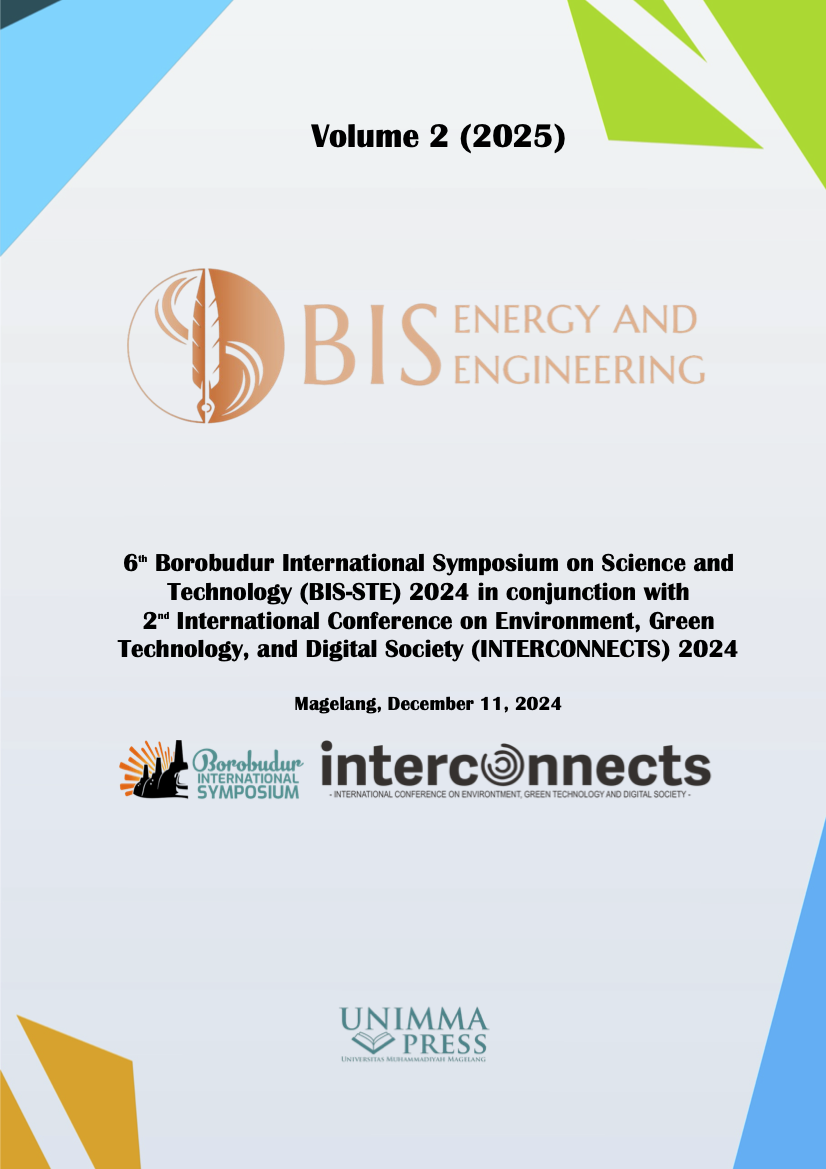Internet of things-based intravenous fluid monitoring system prototype and drops per minute control with MG996R servo
Keywords:
Intravenous, Loadcell, Infrared, Servo MG996r, Internet of thingsAbstract
A medical device called an intravenous is used to restore electrolyte balance in hospitalized patients with various diseases by replacing lost fluids. When a patient has an emergency, such as dehydration, seizures, high fever, malaria, diarrhea, or other illnesses, an IV is usually required. In health facilities, the practice of intravenous monitoring by healthcare workers serves as an essential part of treatment. This is especially important because delays in intravenous changes or differences in intravenous flow rates in patients can be fatal to the treated patient. A system of tools is needed to facilitate nurses in monitoring the condition of the intravenous volume, and the number of intravenous droplets in the patient. Intravenous volume, the number of intravenous droplets per minute of the treated patient, and notification of intravenous fluid running out. This intravenous fluid monitoring system uses a Loadcell sensor to measure intravenous volume, an Infrared sensor to detect intravenous droplets, and an MG996r servo motor to adjust the speed of intravenous fluid drops automatically. The web monitoring platform of this system is used to display the condition of intravenous volume and droplets per minute in real time. From the test results, the average value of Loadcell accuracy in measuring the mass of objects on 25 data reaches 99.08% and the average value of the accuracy of the MG996r Servo in adjusting the speed of the intravenous drops on 5 test data reached 96.96%. The Liquid Crystal Display will display the volume of intravenous fluid, drop per minute (DPM), and counter, as well as the selected condition between adult or child, while the Web will display the volume of the intravenous fluid, DPM, and pop-up notification that the intravenous fluid will soon run out when the intravenous fluid read by loadcell less than 100ml.
References
[1] Adis Lena, Kusuma Ratna. 2008. “Pengertian Php Dan Mysql.” Pengertian Php Dan Mysql 6.
[2] Dinata, Widya Rahayu. 2022. “Rancang Bangun Sistem Monitoring Cairan Infus Berbasis Mikrokontroler.” Universitas Ahmad Dahlan.
[3] Djuandi, Feri. 2011. “Pengenalan Arduino Feri Djuandi.” Pengenalan Arduino 1–24.
[4] Francisco, Alecsandro Roberto Lemos. 2013. “IDE Arduino.” Journal of Chemical Information and Modeling 53(9):1689–99.
[5] Habibie, Robi Yusuf dan Andi Adriansyah. 2021. “Rancang Bangun Infuse Fluida Detector Untuk Pasien Icu Menggunakan Metode Wsn (Wireless Sensor Network).” JJEE : Jurnal Edukasi Elektro 5(2):98–104.
[6] Halifatullah, Ismail, Danang Haryo Sulaksono, dan Tukadi Tukadi. 2019. “Rancang Bangun Sistem Monitoring dan Kontrol Infus Dengan Penerapan Internet of Things (IoT) Berbasis Android.” POSITIF : Jurnal Sistem dan Teknologi Informasi 5(2):81.
[7] Hayadi Hamuda. 2019. “Monitoring Sistem Infus Medis Berdasarkan ZigBee Wireless Sensor Network (WSN).” InComTech: Jurnal Telekomunikasi dan Komputer 9(2):77–86.
[8] Hendrawati, Trisiani Dewi dan Rafi Aditya Ruswandi. 2021. “Sistem pemantauan tetesan cairan infus berbasis Internet of Things.” JITEL (Jurnal Ilmiah Telekomunikasi, Elektronika, dan Listrik Tenaga) 1(1):25–32.
[9] Ikatan Dokter Anak Indonesia. 2016. Konsensus Kebutuhan Air pada Anak Sehat.
[10] Kusuma, Tony dan Muhammad Tirta Mulia. 2018. “Perancangan Sistem Monitoring Infus Berbasis Mikrokontroler Wemos D1 R2.” in Konferensi Nasional Sistem Informasi.
[11] Lestari, Novi. 2017. “Rancang Bangun Sistem Monitoring Sisa Cairan Infus Dan Monitoring Aliran Infus Berbasis Arduino Di Puskesmas Muara Beliti.” JUSIKOM 2(1):21–27.
[12] M Fathurrakhman. 2009. “Diduga Akibat Perawat Lalai, Bayi 4 Hari Tewas.”
[13] Mahdalena, Izza. 2021. “Implementasi Internet of Things (IoT) Pada Monitoring Cairan Infus.” in Conference, Electro National.
[14] Mujahidin, Maulana, Farhan Adiandoro, Ericks Rachmat Swedia, dan Margi Cahyanti. 2020. “Pemanfaatan Internet of Things Dalam Rancang Bangun Sistem Informasi Pengawasan Bus Pada Terminal Bus Berbasis Arduino Uno Dan Node Mcu.” Sebatik 24(2):228–33.
[15] Muljodipo, Nuryanto, Sherwin R. U. A. Sompie, Reynold F. Robot, M. Eng, Jurusan Teknik Elektro-ft, dan Email Nuryantomuljodipogmailcom. 2015. “Rancang Bangun Otomatis Sistem Infus Pasien.” Jurnal Teknik Elektro dan Komputer 4(4):12–22.
[16] Nataliana, Decy, Febrian Hadiatna, dan Yosinna Maulida. 2022. “Sistem Monitoring Infus dengan Human Machine Interface secara Wireless.” ELKOMIKA: Jurnal Teknik Energi Elektrik, Teknik Telekomunikasi, & Teknik Elektronika 10(2):470.
[17] Nataliana, Decy, Nandang Taryana, dan Egi Riandita. 2016. “Alat Monitoring Infus Set pada Pasien Rawat Inap Berbasis Mikrokontroler ATmega 8535.” ELKOMIKA: Jurnal Teknik Energi Elektrik, Teknik Telekomunikasi, & Teknik Elektronika 4(1):1
Downloads
Published
Conference Proceedings Volume
Section
License

This work is licensed under a Creative Commons Attribution-NonCommercial 4.0 International License.

